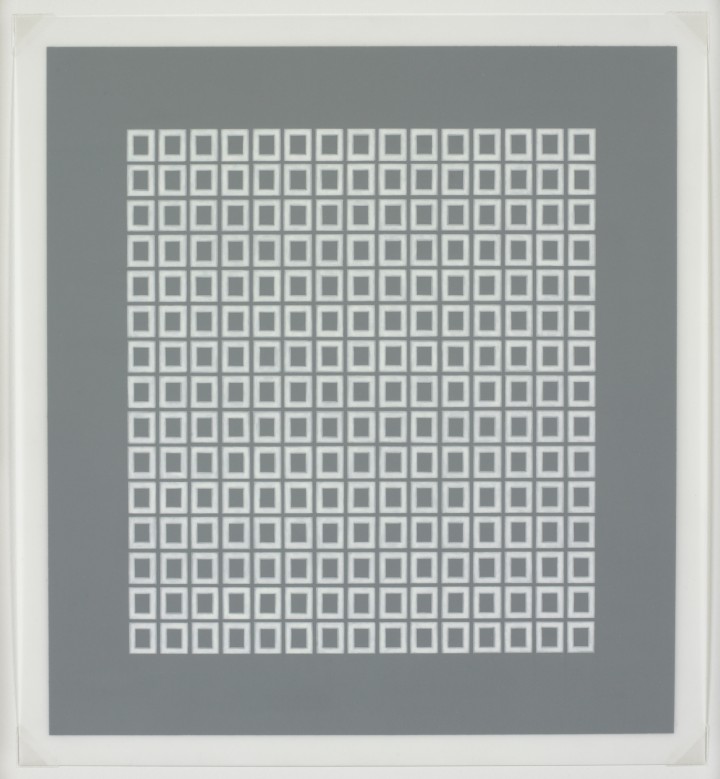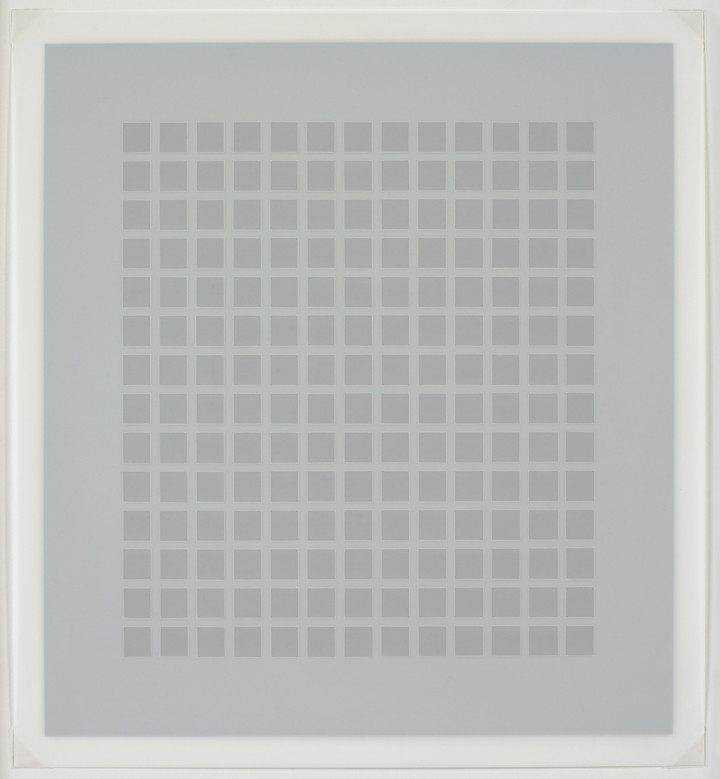
Figure 1. Hadi Tabatabai, DF-27, 2005
Colored pencil with acrylic and vinyl paints on .005 drafting film, 12 x 11 inches (30.5 x 27.9 cm)
© 2012 Hadi Tabatabai

Figure 2. Hadi Tabatabai, DF-29, 2007
Colored pencil with acrylic and vinyl paints on .005 drafting film, 12 x 11 inches (30.5 x 27.9 cm)
© 2012 Hadi Tabatabai
Hadi Tabatabai
In Conversation with Rachel Nackman
The following discussion was conducted by email with the artist in July 2012.
Rachel Nackman: How did you select the materials you used to make these drawings, and what makes them work well for you?
Hadi Tabatabai: For DF-27 (2005; fig. 1) and DF-29 (2007; fig. 2), I used drafting film, colored pencil, and acrylic and vinyl paints. I usually select material based on need, but in this case, I think I was intrigued by the drafting film itself. This type of drafting film has a frosted working surface on both sides, and since the material is translucent you can see both surfaces at once.
RN: Can you describe the process by which you make these drawings?
HT: The drawings are made using a technique similar to glass painting, in which the paint is applied in layers to the reverse side of the glass. Here the windows of the grid were painted first, and then the background color was applied over the first layer. So the entire painted area is seen through the drafting film, and if one were to turn over the drawing, all one would see would be the background color. Afterward I outlined all of the edges with colored pencil on the front side of the drafting film. Because material is applied to both sides of the film, the viewer is allowed to move back and forth between the two surfaces.
RN: What is your working environment for making these drawings?
HT: It varies, but I usually work on a very messy drafting table, where I constantly have to move things around to find a place to work.
RN: How do you prepare yourself for the work ahead of you?
HT: I usually try to take instruction from the work itself. To do that, I try to remove myself from the work as much as I can, since the work ultimately knows what it needs to be, whereas I have only a vague notion.
RN: DF-27 and DF-29 are part of a larger series of drawings. When did you begin making this series, and how long have you continued working within it?
HT: I started making these drawings in the summer of 2005 for a show titled Series at Gallery Joe in Philadelphia. The show opened in December 2005. I continued making these drawings for about four years, and by the end I think I had made fifty-three of them.
RN: Within that series, have you experimented with variations from work to work?
HT: The drawings started out as simply having a painted surface on the back and a line drawing on the top of the drafting film. Afterward I moved from using colored pencils to using a drafting pen, applying acrylic ink lines on both surfaces, before finishing with an overall painted background on the back. From there I moved to using threads to make lines. I would adhere thread to the back of the drafting film and then apply a layer of paint behind it.
RN: You’ve said that rhythm and proportion are very important to you in developing your composition and that those decisions are made intuitively as you work. Where do you try to take each object during the process of making?
HT: The pattern, proportions, and color of each object come from the desire to create work that is neutral. An impossible task, perhaps. So the first piece always informs the second one. If, after finishing the first piece, I realize that it is too light, then the next piece tends to be darker. By making the second piece darker, I realize that the proportions don’t work anymore. Adjusting the proportions in the following piece will affect the temperature of the color, and I will make it hotter or cooler. And so on. . .
RN: Space is also an important element in your work. How do you use your materials in these drawings to engage our perception of space?
HT: Transitional spaces are the main area of interest in my work. This is the type of space where one thing shifts into another—the empty space between things. In the case of these drawings, the material of the drafting film itself is that space. As your eye moves between the painted back of the work and the drawing on the front, you are moving through the drafting film, which is empty of any gesture.
RN: You have made objects using many other materials, including thread, wood, and beeswax. How does working in two dimensions, in acrylic and vinyl paints on drafting film, change the nature of your process?
HT: For at least the past fifteen years, my intentions in making my work have not changed much. What drives me to make my work is often the limitation of the materials. Failures in working with other materials were probably what brought me to using drafting film. Ultimately the process itself does not change. It is always a learning cycle in understanding the materials and trying to come closer to my vision.
Bios
Rachel Nackman
Hadi Tabatabai
